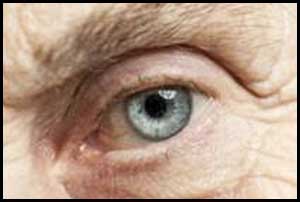- Home
- Editorial
- News
- Practice Guidelines
- Anesthesiology Guidelines
- Cancer Guidelines
- Cardiac Sciences Guidelines
- Critical Care Guidelines
- Dentistry Guidelines
- Dermatology Guidelines
- Diabetes and Endo Guidelines
- Diagnostics Guidelines
- ENT Guidelines
- Featured Practice Guidelines
- Gastroenterology Guidelines
- Geriatrics Guidelines
- Medicine Guidelines
- Nephrology Guidelines
- Neurosciences Guidelines
- Obs and Gynae Guidelines
- Ophthalmology Guidelines
- Orthopaedics Guidelines
- Paediatrics Guidelines
- Psychiatry Guidelines
- Pulmonology Guidelines
- Radiology Guidelines
- Surgery Guidelines
- Urology Guidelines
Statin use for long duration lowers glaucoma risk: JAMA Study

Statin use lowers the risk of primary open-angle glaucoma (POAG), suggests a recent study.
USA: The study, published in the journal JAMA Ophthalmology found that in adults aged 40 years or older, 5 or more years of statin use is associated with a lower risk of glaucoma compared to never use of statins. And, higher serum cholesterol levels were associated with a higher risk of POAG.
Glaucoma is the leading cause of irreversible blindness worldwide. It is a condition in which pressure builds up in the eye and affects the optic nerve. It is characterized by optic nerve degeneration and progressive peripheral vision loss. Recent studies have suggested that the drug used for the prevention of cardiovascular disease (CVD) may also help lower the intraocular pressure and promote blood flow to the optic nerve, lowering glaucoma risk.
Jae H. Kang, Brigham and Women’s Hospital, Harvard Medical School, Boston, Massachusetts, and colleagues conducted the study to assess the association of elevated cholesterol levels and statin use with incident POAG.
For the purpose, the researchers followed 136,782 healthy individuals aged 40 and older and identified a total of 886 primary open-angle glaucoma cases between 2000 and 2015. The researchers used questionnaires to gather self-reported data on participants' serum cholesterol levels and statin use.
Also Read: Eye drops with Turmeric-derivative may be new treatment of glaucoma
Key findings of the study include:
- Every 20-mg/dL increase in total serum cholesterol was associated with a 7% increase in the risk of POAG.
- Any self-reported history of elevated cholesterol was also associated with a higher risk of POAG.
- A history of any statin use was associated with a 15% lower risk of POAG. Use of statins for 5 or more years vs never use of statins was associated with a 21% lower risk of POAG.
- The association between statin use for 5 or more years vs never use of statins and risk of POAG was more inverse in those who were older.
Also Read: Glaucoma increases risk for retinal vein occlusion
"Our study suggests possible protective associations beyond cardiovascular conditions for long-term statin use. Statins may also strengthen neuroprotective mechanisms that prevent degeneration of cells in the optic nerve," said Dr. Kang, ScD, an assistant professor of medicine in the Channing Division of Network Medicine at Brigham and Women's Hospital.
"Primary prevention remains the ultimate challenge and noblest goal for averting the debilitating consequences of chronic disease. In glaucoma, lowering of intraocular pressure remains the only known modifiable risk factor to prevent disease development. The identification of new avenues for intervention, prior to the establishment of disease, is of utmost importance given the anticipated rise in glaucoma prevalence worldwide, especially among high-risk populations. Yao Liu and Barbara E. Klein from the University of Wisconsin School of Medicine and Public Health, Madison write in an accompanying editorial.
"As high cholesterol and statin use have been associated with other neurodegenerative diseases, the interrelationships between cholesterol, glaucoma and these outcomes is also fertile ground for further scientific inquiry," said Kang.
To read the complete study log on to http://dx.doi.org/10.1001/jamaophthalmol.2019.0900

Disclaimer: This site is primarily intended for healthcare professionals. Any content/information on this website does not replace the advice of medical and/or health professionals and should not be construed as medical/diagnostic advice/endorsement or prescription. Use of this site is subject to our terms of use, privacy policy, advertisement policy. © 2020 Minerva Medical Treatment Pvt Ltd